Tourist veggies in Madagascar
A biodiversity hotspot, country of lemurs and chameleons, and home to Leah and Chris. It’s also a relatively short flight from Tanzania, so we were determined to visit. We had booked our flights, but hadn’t organised anything else, until by chance we met Franz and Ellen in the Comoros. We got talking with them over dinner one night and, as owners of a tour company specialising in Madagascar trips, they helped us decide where to go.
After a few emails with them and Leah, the ideas were turned into an itinerary. And finally on Saturday morning we boarded the flight to Antananarivo (often called Tana), the capital of Madagascar.
Obtaining a visa here was simple and straightforward. No long queues like in Tanzania, but different stations for checking health forms, payment (28EUR each), adding of visa sticker, and finally, the necessary signatures needed to enter the country. Our bags rolled into the foyer as we left the last station, we got some money out of the ATM and headed out the door to find Lova waiting.
Lova was our guide in Madagascar, organised by Franz and Helen. He drove us to the hotel and immediately started to exitedly explain the sights we saw on our way. Hotel Sakamanga (blue cat) is an old house with lots of different nooks and rooms everywhere, it even has a swimming pool. But as it is winter at the moment we certainly weren’t in a hurry to test it out. Tana, at 1,250m altitude, certainly felt quite cool after Dar.
We did go for a walk before dark, exploring a little of the hilly town, checking out some interesting looking street foods. But we had booked dinner in the hotel, apparently one of the best restaurants in town, so we didn’t try any yet. Back at the hotel we had our first taste of Malagasy food and we liked it.
Lova picked us up at 8am and we settled in for a long day’s drive. There were lots of questions from us about everything we saw around us, and lots of answers from Lova. His English was excellent and we learned heaps.
We tried kakapigeons (yep, that means pigeon poo), which was pretty tasty. As well as koba, sold by the side of the road on little tables carried by the salesmen and used as a chopping board when you buy a piece. It is a mix of banana and nuts, wrapped in banana leaves and steamed.

buying our first Malagasy food by the side of the road – this is koba (full name kobandravina) a banana and nut snack boiled in banana leaves
We had many photo stops, a leisurely lunch stop and a short hike across a bridge spanning two sections of an impressive river with plenty of rapids and little waterfalls. As a result we didn’t reach Ankarafantsika National Park until just before 7pm when it had already turned dark. We met our local guide in the village, ordered our food in the restaurant and went straight back to a pre-agreed rendez-vous point to start our very first evening safari.
Rappra and Olga were already waiting for us. Rappra and Olga are married and are also both guides. Together they set off along a trail just outside the national park, spotting animals. And within the first few minutes we had already spotted our first few chameleons and then our first lemurs! A couple of tiny golden brown mouse lemurs, which were very cute.
The walk was only an hour, but we spotted so many animals, it was a great introduction to the local nocturnal wildlife. And having two excellent guides made the experience even better.
After dinner we discovered that nobody could find the key for our lakeside bungalow in the park, but Lova had managed to book us into another bungalow back in the village (Blue Vanga, to continue the blue theme…), so we drove back again after eating our pre-ordered dinner in the Park’s restaurant. The food was good and we had our first taste of the tourist vegetables of Madagascar…

the Madagascar tourist veggies, always carrots, zucchini and green beans or some minor variation to this theme… totally unecessary as we saw a huge variety of vegetables
Everywhere we went in Madagascar we saw lots of different veggies on the side of the road, but every restaurant we went to on our trip would serve the same combo: courgette, carrot and green beans… But luckily we had Lova, and he sometimes managed to convince the restaurants to prepare some other veggies for us. As they prepare their food in the morning for lunches and dinners this is not always easy!
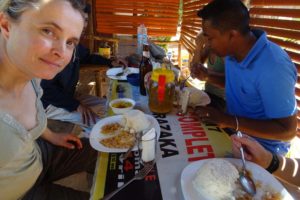
Lova has organised pumpkin stew and beans for Jude instead of the standard tourist veggies, it is delicious!
We spend a full day and evening walking around in Ankarafantsika NP and spotted our very first sifakas (a big black-and-white lemur) and sportive lemurs, as well as many other animals and birds. Rappra really was the most amazing guide and incredibly knowledgeable.
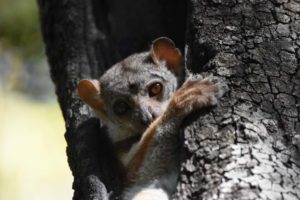
this milne-edward’s sportive lemur is one of the nocturnal species, but if you are lucky you can spot them snoozing during the daytime

a couple of 600 year old dansonia suarezensis (or Suarez baobabs), one of 6 species of baobab endemic to Madagascar. These two are approximately 35m tall and are endangered. They think the fruit bat pollinates the tree, but they don’t know which animal disperses the seeds.
We followed our first introduction to the Malagasy wildlife with another full day and a half of driving, before we organised a boat tour through the mangroves to try to find the super special black lemurs with blue eyes. These lemurs are the only mammals, apart from humans, to have blue eyes! The boat trip wasn’t very successful, but we eventually find them on a walk behind the village. They are pretty cool.
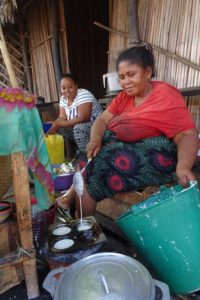
this lady is making delicious mofo gasy, rice flour cakes which are pretty much the same as vitambue in Tanzania
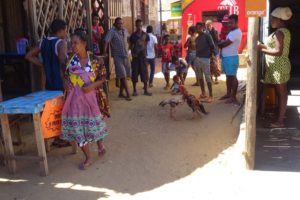
an impromptu cock fight is held as we are waiting for a boat driver to be found to try to find the blue-eyed black lemurs
We continue to Abanja where we are meeting Leah! It has been years since we have seen her, and we have a lot of catching up to do. We start immediately over a drink and dinner 🙂 She used to live in Abanja, but is now based, with her other half Chris, on Nosy Komba, a small island off the main island. And that’s where we are heading the next day after a quick stop at Blue Ventures, her NGO, to try to find a key that was never lost…
Whilst Leah and Chris were working we explored the island, snorkeled the local reef and went for some lovely diving. Soon enough the weekend arrived and we all took the ferry back to the main island. We were going on an adventure together, including Goff, Chris’ photographic assistant.
After some bumpy hours in our ‘new’ car with driver we arrived at Ankarana National Park. Most of the National Parks and place names in Madagascar start with an ‘A’ and have very long names – very confusing. The next morning we began exploring, keen to see the tsingy forest and of course more lemurs, birds and anything else we could find. Travelling with Chris, Leah and Goff changed our pace significantly, and we learn a lot about taking (the time to take) photos and using tripods!
We find more lemur species, lots of birds, chameleons, bats, spiders, stalactites and stalagmites and enjoy watching two different types of lemurs (crowned and common brown) come out of the trees and into the open dry, rocky creek to drink in a small cave.
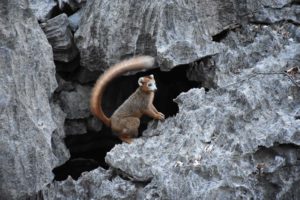
a crowned lemur emerges from the forest with his family and some brown lemurs to have a drink in a small cave in the dry river bed
We also see our first tsingy. Pretty cool to look at, pretty impossible to walk on, over or through. We observed the tsingy from a viewpoint, but the next day we would also follow a trail built across and through the tsingy. It took them 3 years to build, and it is easy to understand why.
Tsingy is best described as sharp limestone karst pinnacles. I’d probably even describe it as razor sharp… with narrow canyons between them, making it impossible to cross for humans, unless you are on this trail they built.
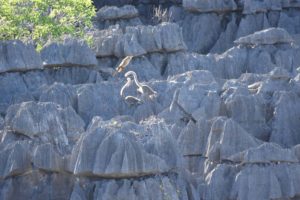
the crowned lemurs don’t seem to have an issue with crossing the tsingy, look at the male jumping across
But the highlight of Ankarana NP has to be the ring-tailed mongoose. The nice thing was that he wasn’t scared of us at all. As long as you didn’t make sudden movements or noise he was quite happy with us around as he was hunting for food. I guess being one of the few predators here means you don’t have much to fear.

ring-tailed mongoose (or vontsira mena), one of 10 living carnivores endemic to Madagascar and all thought to have evolved from one ancestor
Ankarana also has a number of caves and we explored several. We found some pretty cool spiders, geckos, bats and even a Malagasy scops-owl.
Our next stop, a short drive further north, is Montagne d’Ambre or Amber Mountain NP. Armed with many cameras again, and of course the tripods and lights, we set off once again to explore. But unlike our normal explorations, here we only move at a snail’s pace as finding chameleons, leaf-tailed geckos and other critters is not easy. Especially not if you are trying to find the tiniest of chameleons which are resident here. They are only around 1.5 cm, and that’s including the tail!
Severin, our guide, was an excellent spotter and knew where to look for the tiny chameleons, but even he took some time finding them. And then we spent quite a bit of time trying to take a photo of them. Not easy when the animal is tiny and brown and lives amongst leaf litter on the brown soil… But how cool is the result!
Every night we went for a walk too, trying to find more chameleons, geckos and of course the nocturnal lemurs, both ‘tiny’ and ‘normal’ sized.
And then it is time to say goodbye… Chris, Leah and Goff head back down with the car as they need to get back to work. We go for one more walk in Amber Mountain NP before heading to Diego Suarez, the small town in the north of Madagascar from where we are booked on a flight to take us back to Tana. And this time there was no delay like in the Comoros when every flight was either delayed, cancelled or moved forward. We depart on time and in Tana a new guide picks us up from the airport. He would be our guide for the last few days as Lova was already on another trip.
We don’t hang around Tana, but immediately drive 150km east where there is one more area we would like to visit, the Andasibe-Mantadia NP. On the way we stop several times, to buy food and check out a small wildlife park. The street food is excellent, and we eat muf buriburi and mofo gasi. The wildlife park is not as good as the food, it’s basically a badly designed zoo with small cages and animal harassment. We don’t stay long.
Our last hotel is located in huge grounds, big enough to house several islands with lemurs! But I am getting ahead of myself. As usual, our guide has already been arranged for an evening walk, with another park guide who is an excellent spotter with a great knowledge of all the animals, including the birds.
The reason we have come to the Analamazaotra Reserve (which is located in the Andasibe-Mantadia NP) is the indri and its haunting song. We are the first to find a group of indri, and even though we can hear other groups calling in the distance, this group stays eerily quiet. They normally only call once in the morning and once in the evening. We are thinking we have missed the songs when they suddenly start. It is a beautiful, but haunting sound. Echoing through the bush, with some responses coming back from other groups in the distance. Totally unique. Have a look at our short video to hear the sound of indris calling!
Before our final night in Madagascar we check out Mitsinjo, a community run conservation area on the other side of the reserve. We hope that by visiting and supporting it, the local community will realise money can be earned if they leave the forest and don’t chop it down. It’s a stunning area and we enjoy our walks here too, with plenty of wildlife around.
Back at the Vakona Lodge where we are staying, we buy tickets to visit the lemur island on our last morning in Madagascar. We have to drive to the airport today and must leave at 10am. The island (which turns out to be four islands) opens at 8, so after breakfast we drive down. We are the first people there and we hop in a kayak with our guide. He is also our engine. As we approach the first island we are surprised to see the lemurs come to us, until our guide explains that the populations on the different islands need to be fed. Usually the first boat out carries the food (and no tourists), so the lemurs were hoping for breakfast, but instead got us.
We see three different species of lemurs here we hadn’t seen yet. One of them the ring-tailed mongoose, which is probably the most famous of all lemurs of Madagascar. They are inquisitive and Jude’s jacket becomes a favourite with several of them licking it whilst climbing all over her.
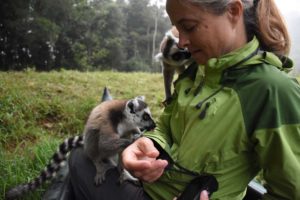
the ring-tailed lemurs are very interested in Jude’s jacket and keep licking it (maybe time to wash it?)
On our way out we make one last stop, to see the fossa they have here in captivity. A chicken is grabbed and off we go. It’s a short hike to his cage. The fossa is a beautiful carnivore we would have loved to see in the wild, but is nocturnal and very shy. It kills the chicken in a few seconds, showing its skill as a hunter, before it is stashed away for safe keeping.
Several hours later we enter the chaos of the departure hall of the Tana airport. What a mess. Lengthy security checks means everything is held up, and every official seems to work at their slowest. We manage to spend about 5 minutes in the lounge after we are finally through all the checks before boarding our flight back to Dar.
We loved Madagascar and are keen to return one day to explore some different areas perhaps, and find some more of the incredible variety of animals they have here.
We booked our trip to Madagascar with Priori Tours and can highly recommend them. Lova was an amazing guide with excellent English who also comes highly recommended.
Places we stayed we can recommend:
- Sakamanga in Tana – great hotel, fantastic restaurant
- Blue Vanga bungalows and the national park’s bandas near the lake in Ankarafantsika NP
- Palma Nova in Ambanja – great hotel, lovely atmosphere and delicious chocolate mousse
- Leah and Chris’ place on Nosy Komba (aka the doughnut) – delicious home-cooked meals, lovely room with amazing inner courtyard and excellent snorkelling options right on your doorstep, the best was the company though 🙂
- Le Relais near Ankarana NP – nice little bungalows with delicious, home-cooked meals, only a minute’s drive from the entrance of the NP
- Monastery near Montagne d’Ambre NP – good basic rooms with excellent food prepared by the nuns, lovely shop with homemade souvenirs too
- Vakona Lodge near Andasibe – Mantadia NP – beautifully located lodge in huge grounds, spacious bungalows, excellent fireplace and good food. This is the place with the lemur islands.

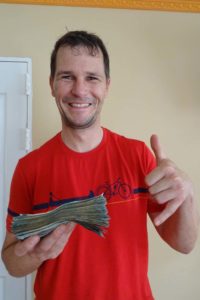
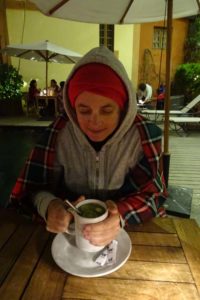


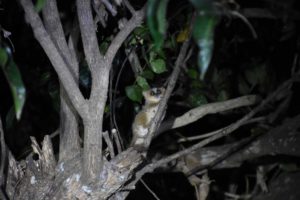
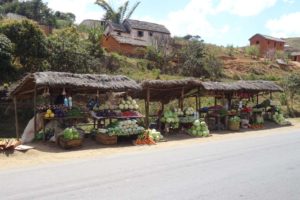
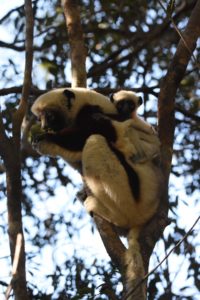
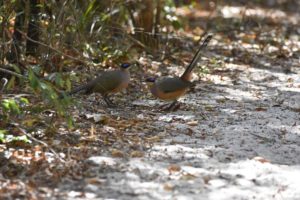
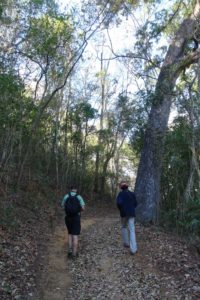

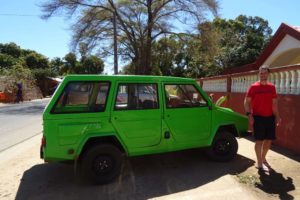
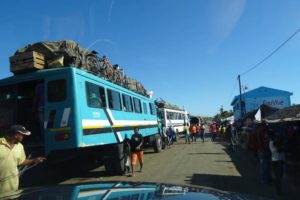
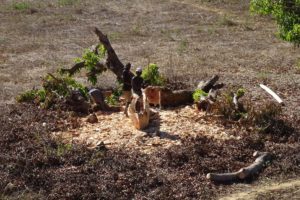
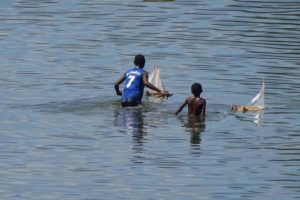

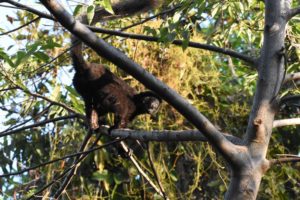
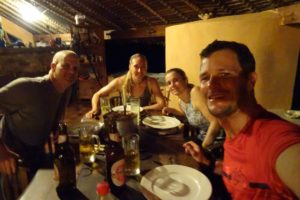
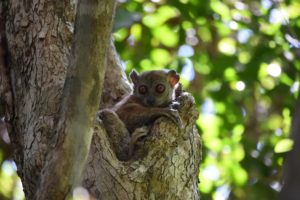
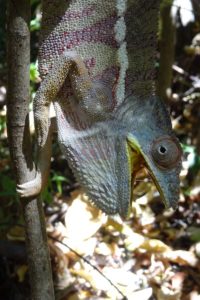
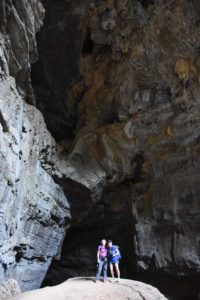
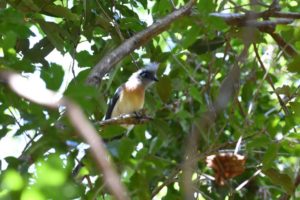

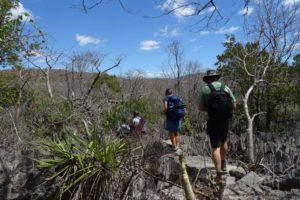
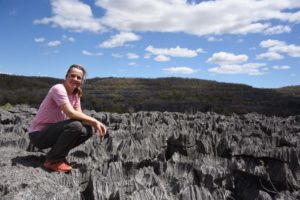
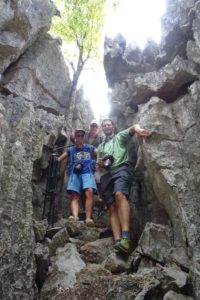
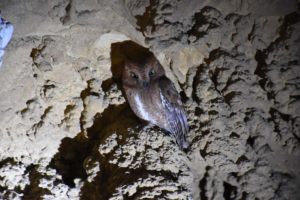
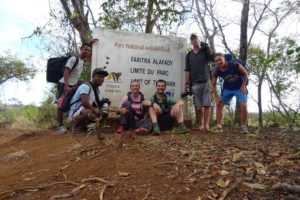
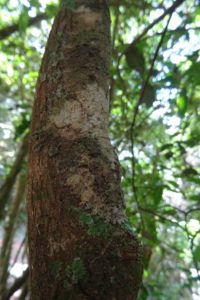
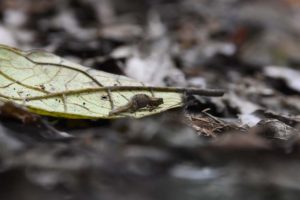

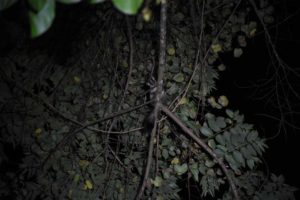
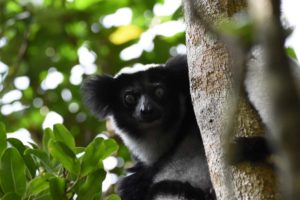
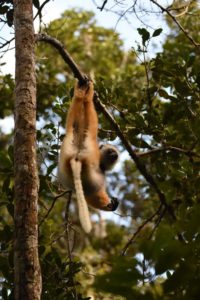

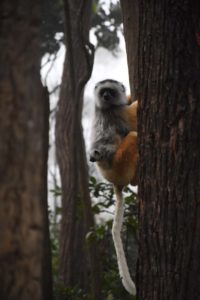


Een prachtig verhaal en erg fraai opgemaakt met schitterende foto’s! Het filmpje is ook erg fraai/leuk!
[misschien ‘n idee om jullie avonturen door te sturen naar “BNN op reis”??]
bedankt weer (voor het lezen en een comment :-)) jullie zouden Madagascar ook super vinden! BNN op reis? wij hebben niet zo veel video van onze avonturen (wij zijn meer foto mensen) dus denk niet dat BNN op reis daar iets mee kan? 🙂
What an amazing adventure! Am so jealous … and really, I’d be hard pressed to contain the urge to cuddle those Lemurs!!! 🙂
hahahaha, I can just picture you climbing up the tree and the lemur jumping away 🙂 they are soooo fast!!! But yes, it was totally awesome and you would so love it. Especially with your ability to take amazing photos!! It is totally a photographic paradise! Oh and when are you in Kenya? So are we seeing you in Tanzania this year??
Great job again, Jude! Have you washed your jacked yet?
hahahahaha, no….. of course not… totally forgot!
We’re going, we’re going to go too! Couldn’t miss Madagascar after your captivating blog Jude! Rob suggests we go after our (2nd) 90 day tour in Southern Africa (April/May/June 2019). Loved this story xx
I knew you would love it. It is totally amazing! Highly recommend it. Can’t squeeze it in before or after the 2018 trip?
weer heerlijk leesvoer!
we zijn helemaal niet jaloers hoor………
veel plezier en blijf schrijven hè!
groetjes uit Alblasserdam
bedankt weer! we wachten nog steeds op jullie bezoek bij ons 🙂 en ja, Madagascar kunnen we ontzettend aanraden! Fantastisch gewoon!